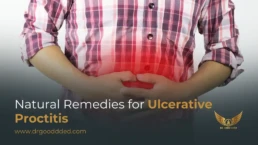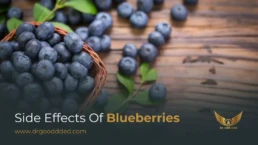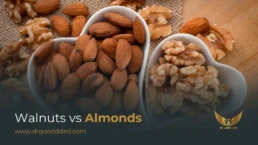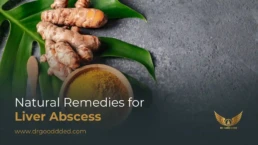There are several foods to avoid with anemia that many people do not know about. In fact, before learning about the right anemia diet plan, you should know a little more about the ailment in question. Anemia is a condition which impacts innumerable people worldwide, especially women. There are various factors which lead to reduced red blood cell production in the human body. There are other factors like iron deficiencies and also folate deficiencies. Consuming proper food for iron deficiency or foods good for low iron will help in scaling up levels of hemoglobin while certain items may work as a hindrance towards suitable absorption of such nutrients.
There are several short-term and mild anemia variations although the condition may turn more serious if you have not treated it for a long period of time. The positive aspect here is that anemia may be prevented and corrected easily by consuming iron in sufficient quantities. Anemia happens whenever there is a lack of ample healthy and red blood cells in the human body. You may have lesser red blood cells or they may lack hemoglobin, which is the protein that is rich in iron content. Red blood cells have responsibility for oxygen delivery throughout the human body and hemoglobin is the specific protein carrying the oxygen in this case.
When the red blood cell count or the hemoglobin level is on the lower side, your body will lack desired oxygen and this may lead to feelings of tiredness. You may witness other symptoms as well, such as dizziness, shortness of breath, paleness of skin, headaches and cold feet and hands. The commonest anemia types take place when iron is lacking in the body. The condition is known as iron-deficiency related anemia and it may happen if there are insufficient quantities of iron in the diet plan. The body will naturally require iron and various other nutrients for creating healthy red blood cells and hemoglobin. Obtaining proper iron supply along with supply of folate, protein and Vitamin B12 is vital in this case. This is only possible if you consume a diet which is balanced or take meal supplements.
Blood loss is another common reason behind anemia resulting from iron deficiencies. This may take place due to surgeries, childbirth and injuries. Women who are of child-bearing age may also be at risk for deficiencies in iron owing to loss of blood occurring due to periods. Women require added iron at the time of pregnancy. Anemia should be treated promptly at this time since women may otherwise give birth to children who are also deficient in iron. This may impact the overall brain development and growth of the child. Many people often live with this condition without realizing the same. They may witness milder symptoms or no symptoms in the first place.
Doctors may rely upon blood tests for making sure whether someone has anemia or not. Commoner anemia types may be combated through the consumption of foods that are rich in iron. The best sources include poultry, red meat, fish, and shellfish along with lentils, peas, tofu, beans, dried fruits like raisins and prunes, dark green and leafy vegetables, spinach, and bread or cereals which are iron-fortified. You should possess a clear understanding of the anemia foods to avoid and also what foods to eat for anemia at the same time.
5 foods that you should bypass In Anemia
Here are some of the types of foods bad for anemia and you should carefully note the same.
- Food items containing calcium- One of the biggest reasons behind anemia is deficiencies in iron. People suffering from this condition should not consume food items that are rich in calcium. This is because calcium will intervene with iron absorption in the body, thereby leading to a deterioration of health conditions. Foods that have calcium include milk and milk-linked items like nuts, cheese, bananas, and yogurt.
- Food items containing tannins- Although coffee, black tea, and green tea have their own benefits, those suffering from iron deficiency-related anemia should restrict their consumption of the same. They have tannins, which are compounds that can directly interfere with iron absorption. Other items that are packed with tannins include corn, grapes, and also sorghum.
- Food items that have gluten- Food items with rich gluten content may be bypassed by those who have anemia. Gluten may lead to intestinal wall damages for some people while leading to lower absorption levels of folic acid and iron as well. Both of these elements are needed for higher RBC (red blood cell) production. Gluten is contained in items like wheat-based products, pasta, rye, barley, and oats.
- Food items that have phytates- Food items with phytates or phytic acid include whole-grain wheat, brown rice, legumes, and nuts. They should be avoided by those with anemia. This is because they fuse with the iron contained in the digestive tract and hinder absorption.
- Foods containing oxalic acid- Food items with oxalic acid may intervene with iron absorption in some cases. Owing to this aspect, those with anemia should consume these items in lower quantities and avoid them if possible throughout the entire medication cycle. Food items with oxalic acid include parsley, spinach, chocolates, and peanuts.
Polyphenols may also hinder the absorption of iron. Several kinds of food items such as coffee, cocoa, spices, apples, and walnuts may have Phenolic compounds or polyphenols and should be avoided by those with anemia. By following these tips, it is possible for those with anemia to gradually build up their absorption of iron and combat deficiencies over a sustained duration.

This article is medically reviewed by Dr. Chandril Chugh, Board-Certified Neurologist, providing expert insights and reliable health information.
Dr. Chandril Chugh is a U.S.-trained neurologist with over a decade of experience. Known for his compassionate care, he specializes in treating neurological conditions such as migraines, epilepsy, and Parkinson’s disease. Dr. Chugh is highly regarded for his patient-centered approach and dedication to providing personalized care.








